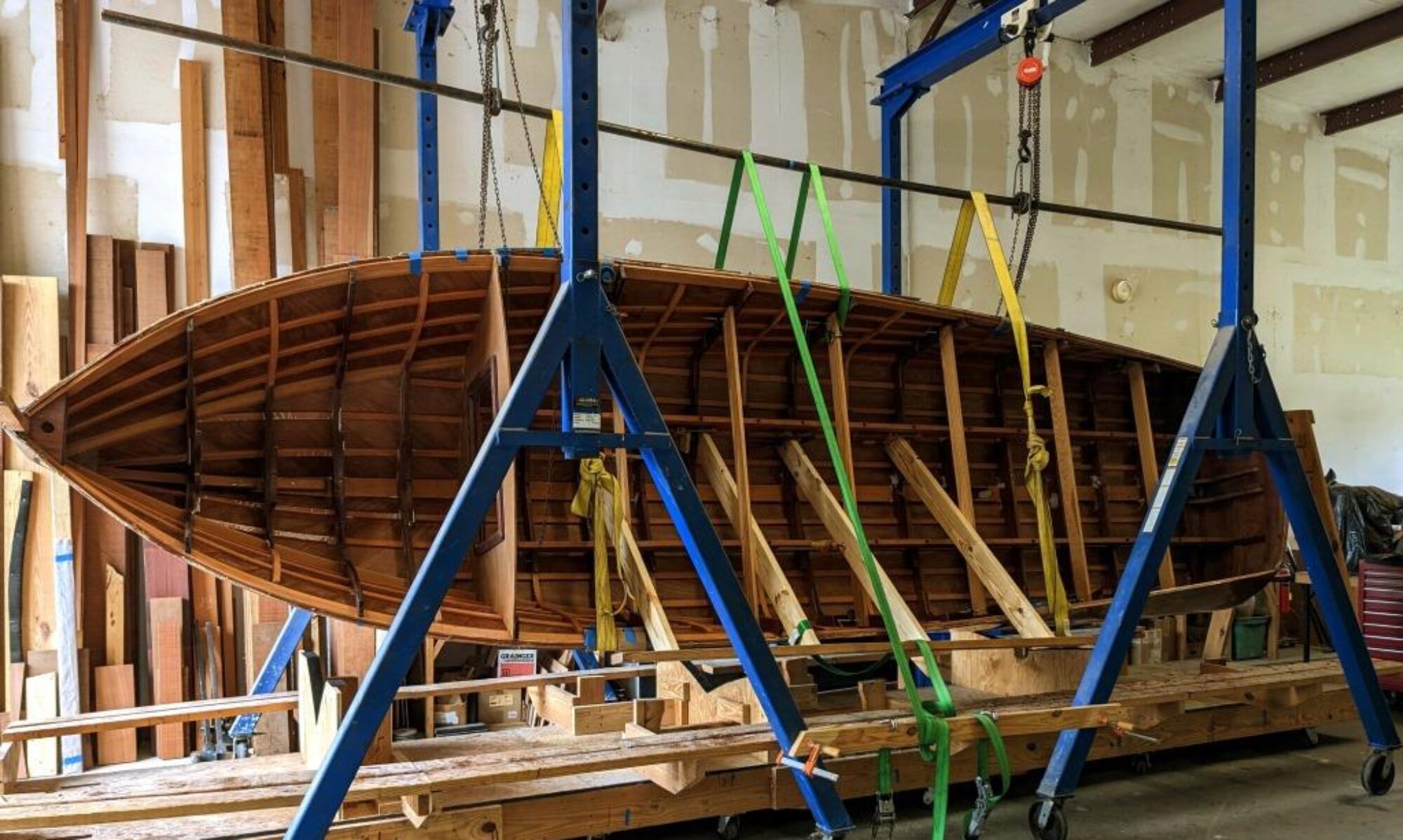
We’ve already discussed cutting the rabbet on the stem and gripe here. You can imagine that cutting this groove along the length of both sides of the keel with a hammer and chisel is a daunting task indeed. Especially in a tough wood like white oak. The procedure is complicated by the fact that the bevel changes along the length of the boat. Just look at the way the bottom comes into the keel.

But thanks to Don Danenberg, there’s a better way. He devised a method of setting up a router track along the length of the keel and using the frames of the boat to get the right bevel. It’s really clever, and saves a good bit of shop time, but requires that the frames all be fair before you start routing.
First, you steam bend a pine plank to lay alongside the keel.
Then screw it to the frames, and screw a 3/4″ x 3/4″ guide to the pine plank that your router will ride against. The router sits on the plank and the keel, and cuts your rabbet. It takes several passes because white oak is tough wood. But it gets the job done accurately and in much less time than it would take to do it with a hammer and chisel.

I had some help from expert boatbuilder Mark Neely setting up this operation. Thanks, Mark!

That Mark Neely is a very talented guy. How great that you got to work with him. Thanks for keeping us abreast of this amazing project!
Thanks Lisa. Yeah, Mark is a pretty good dude to work with.
Not sure I am understanding. Do you have to spile the pine board in order to hold the distance between keel and board?
Well, sort of. You set the distance from the outside edge of your router base to the cutting edge of the router bit with a compass. Then, using this setting, mark the same distance from your rabbet line (already marked on the keel) along the pine board. That’s where you screw your fence down on the pine board. Actually, I set the fence about 1/2″ farther away from the line and made 3 progressively deeper passes. Then I moved the fence to my spiled line, and made 3 more passes. 6 passes for each side of the keel. Does that make it clearer?